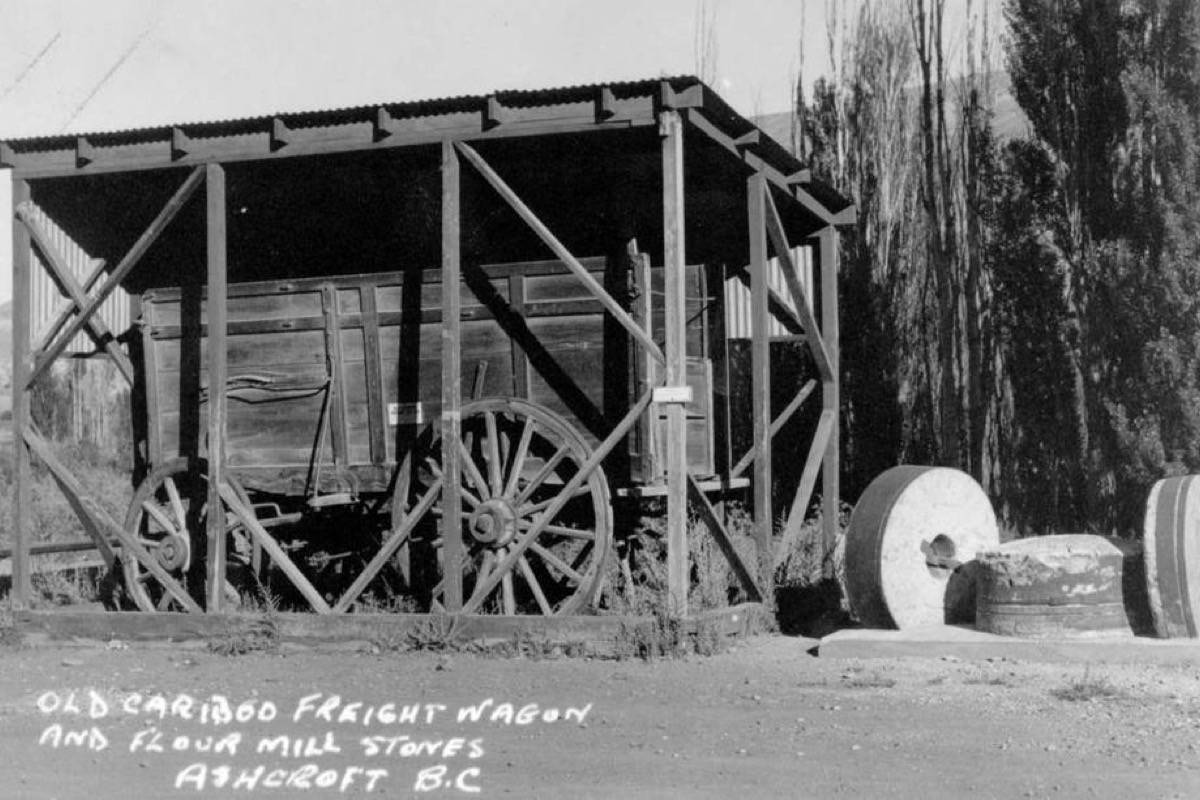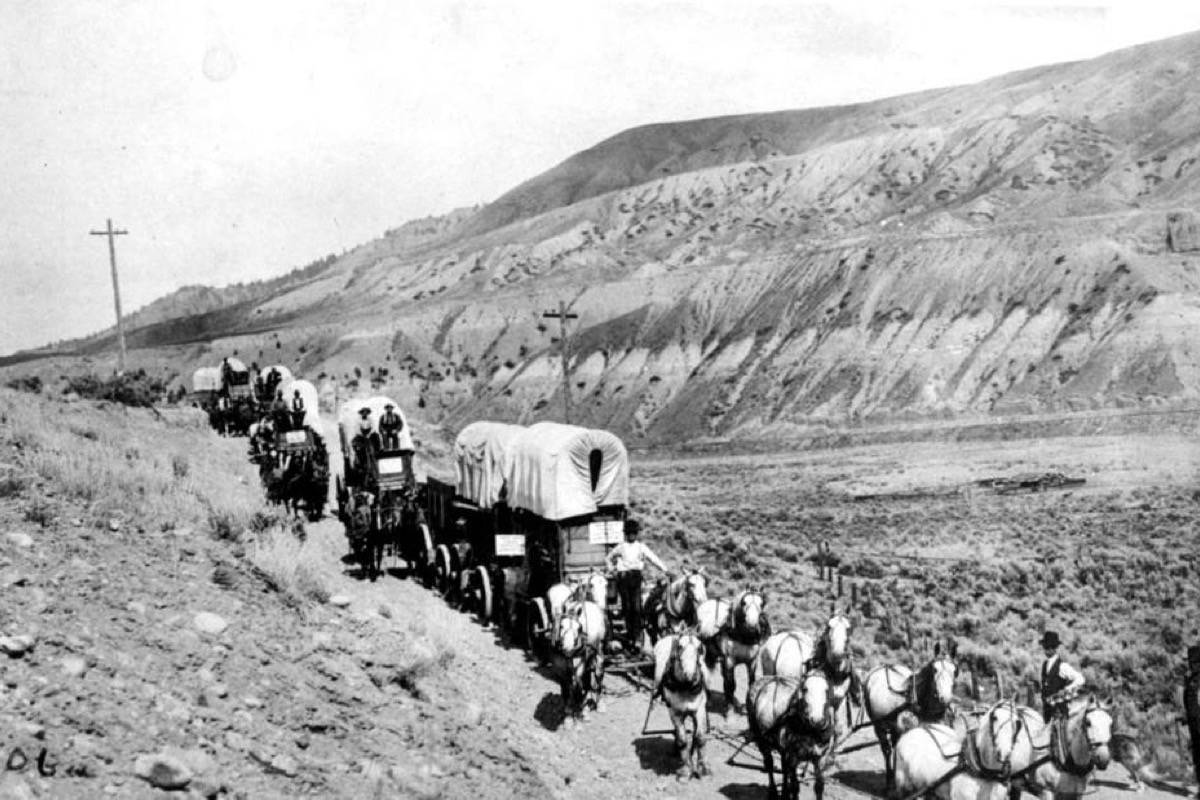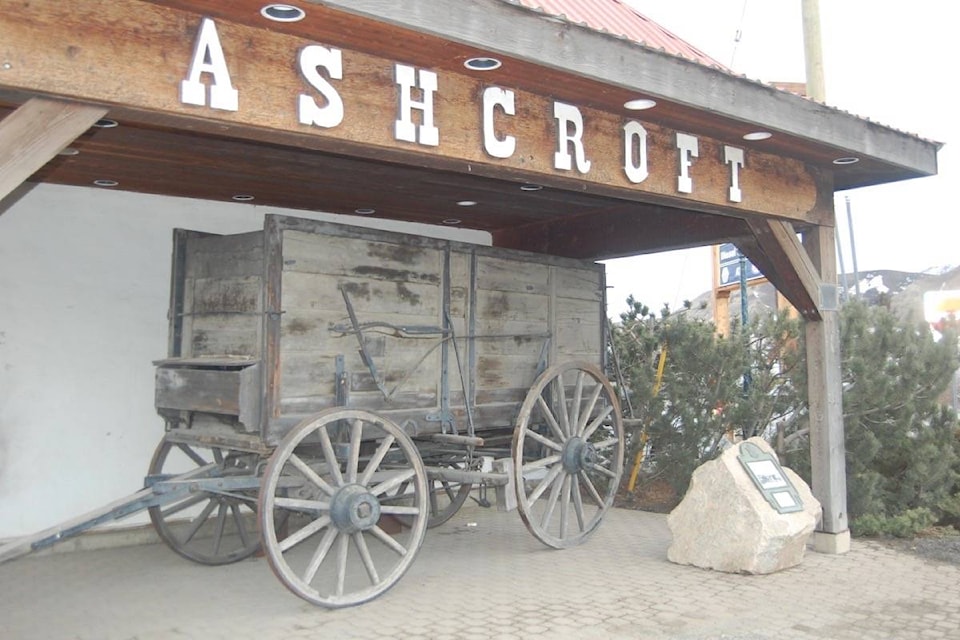Most people who live in Ashcroft are probably aware of the structure that stands beside Highway 97C at the east end of the bridge, adjacent to the parking lot of the Husky gas station, although few people probably think much about it, or about what’s inside it.
However, that humble structure houses one of the earliest pieces of Ashcroft’s history: a freight wagon that was part of Sam McDonald’s outfit on the Cariboo Wagon Road in the early 1860s. The wagon was built by Isaac Lehman in Yale in 1863 and, pulled by mules or oxen, carried loads of goods throughout the province, including flour from Pavilion and freight from Lillooet. Curved supports over the top would have held a canvas cover which protected the goods in the cart from exposure to the weather.
The wagon carried its last load of freight north to Barkerville in 1885, and was then parked behind Lehman’s blacksmith shop in Ashcroft where—exposed to the weather—it began to deteriorate. The fact that some of its parts began to disappear did not help, and the wagon’s fate was up in the air.
In 1927 Lehman tore down his blacksmith shop at the corner of Brink and 3rd Streets—where the Cenotaph now stands—and donated the freight wagon to the town of Ashcroft. What to do with it—and where to put it—then became an issue.
R.D. Cumming—editor of The Ashcroft Journal since 1912, and a keen historian whose collection would form the basis of the first Ashcroft Museum in 1935—took an interest in the wagon and its preservation. In 1928 he established, via The Journal, the “Cariboo Wagon Fund”, soliciting money to construct a suitable structure under which to house the wagon so that it could be preserved and displayed.
At that time the bridge across the Thompson River to Ashcroft was located further to the north than is currently the case, roughly from the foot of Old Cariboo Road to the north of the Legacy Park (some of the footings from this bridge can be seen when the river is low; drive to the far end of Legacy Park and look across the river for a good view). By 1929, however, it was known that a new traffic bridge across the Thompson was to replace the old one, and that it would be located further south, close to where the bridge runs today.
Cumming saw this as an excellent opportunity to place the shed and wagon in an advantageous spot where both would be noticed. “The shed was erected on a site at the north end of Brink Street,” he noted in The Journal on October 26, 1929. “This will be the approach to the traffic bridge to be built across the Thompson River. Suitable signs have been attached to the shed and wagon drawing the stranger’s attention to the relic.
“When the new bridge is built the location will be a splendid site, and no doubt as time goes by the old Cariboo freight wagon will become more and more interesting, not only to tourists, but to the people of Ashcroft and District as well.”
Cumming noted that funds for the construction of the memorial (as he called it) came in from the people of Ashcroft and district, as well as from “people who have left Ashcroft for good but who have still the fame of the Cariboo at heart. From many quarters the Journal has been complimented for its thoroughness in making efforts to preserve at least one of the few remaining relics of old Cariboo gold rush days.”
The ground on which the shed and wagon were housed was leased by the Journal for $5 per year, which Cumming said the paper would meet “from its own funds.” The Village of Ashcroft was incorporated in 1952, and the Village now owns the wagon, which was moved to its present location in 1991 following construction of the current bridge (it had been relocated to the western end of the previous bridge at some point in its past). In 1979 Don Bundus applied some tender loving care to the wagon, and Dan Boss of Historic Hat Creek Ranch aided in further restoration of the wagon in 1992–93.
The wagon—now celebrating its 155th year—continues to honour the pioneer days of British Columbia and the importance of the Cariboo Wagon Road and those who drove it, summed up in verse by R.D. Cumming:
“This is the road to the Cariboo
A mine of tradition and story,
Voicing the fame of the freighting days
The pioneers and their glory.”
editorial@accjournal.ca
Like us on Facebook and follow us on Twitter


